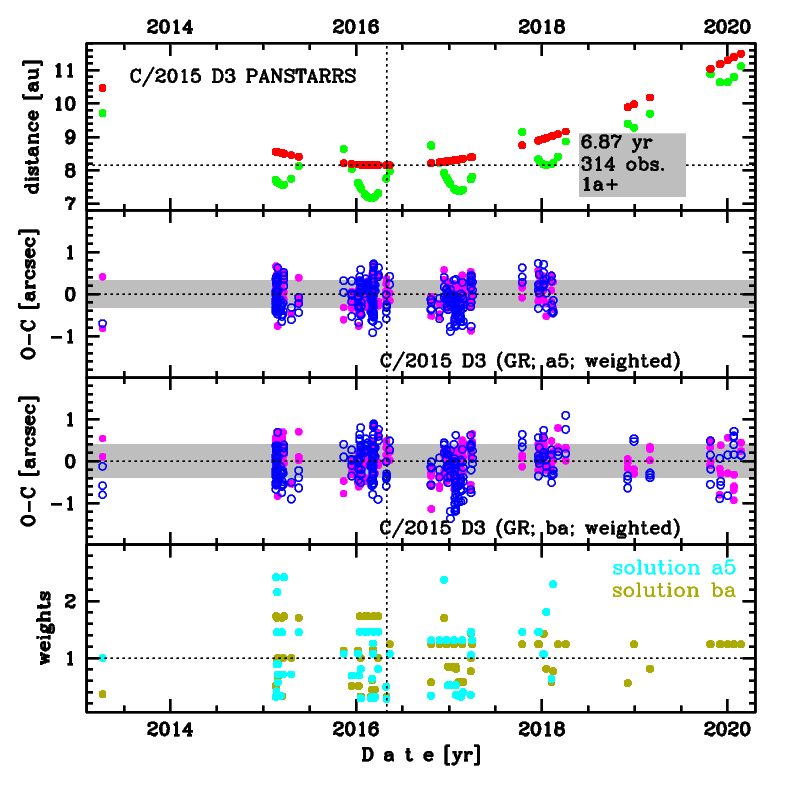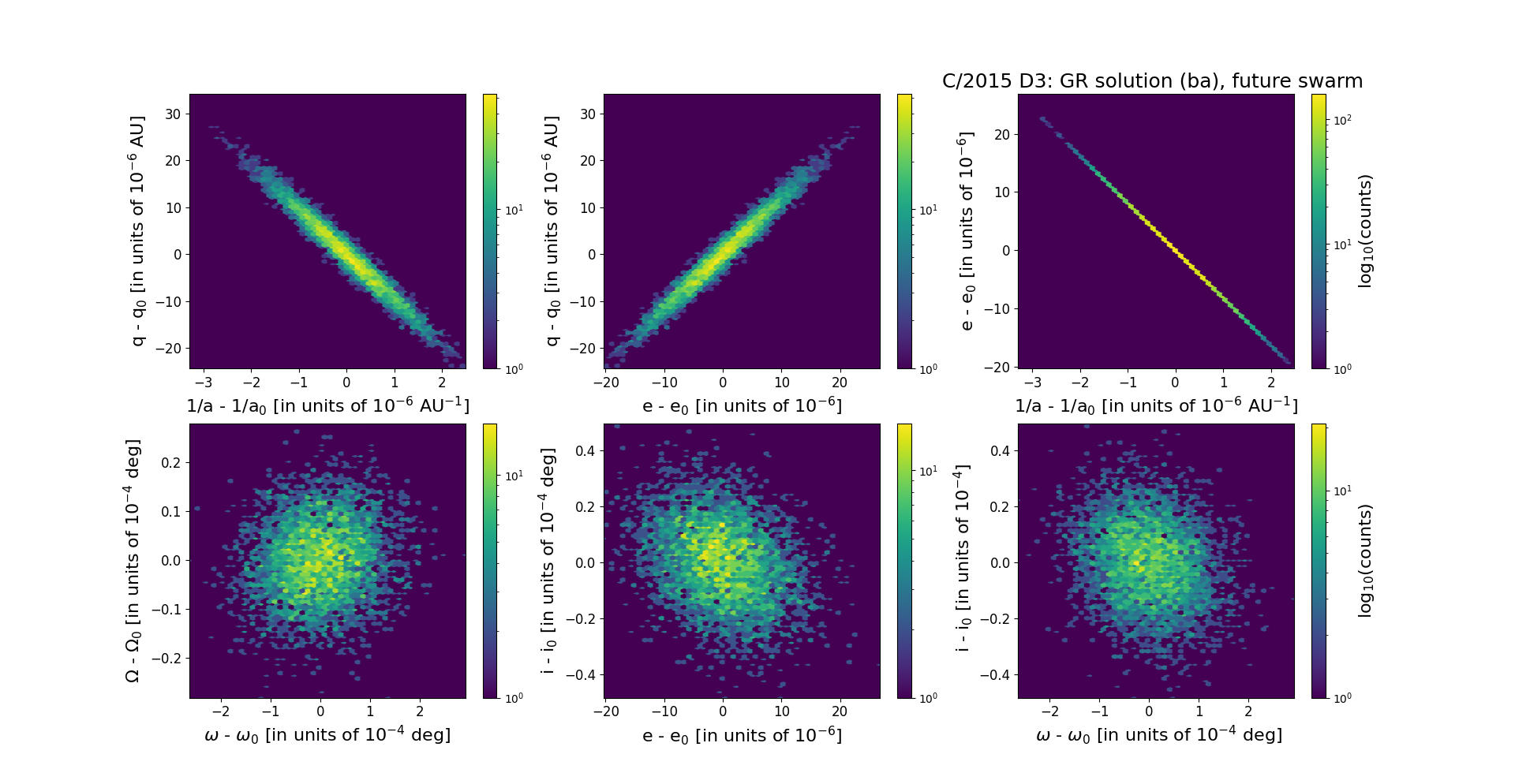C/2015 D3 PANSTARRS
more info
Comet C/2015 D3 was discovered on 19 February 2015 with Pan-STARRS 1 telescope (Haleakala), that is about months after its perihelion passage. Some prediscovery images of this comet were found: taken on 17 February 2015 by Space Surveillance Telescope (Atom Site) and 8 April 2013 by Siding Spring Survey. This comet was observed until 21 February 2020.
Comet had its closest approach to the Earth on 28 February 2016 (7.167 au), about 2 months before its perihelion passage.
Solutions given here are based on data spanning over 6.87 yr in a range of heliocentric distances: 10.46 au – 8.149 au (perihelion) – 11.49 au.
This Oort spike comet suffers slight planetary perturbations during its passage through the planetary system; however, these perturbations likely lead to escape the comet from the planetary zone on a hyperbolic orbit (see future barycentric orbits).
See also Królikowska and Dones 2023.
Comet had its closest approach to the Earth on 28 February 2016 (7.167 au), about 2 months before its perihelion passage.
Solutions given here are based on data spanning over 6.87 yr in a range of heliocentric distances: 10.46 au – 8.149 au (perihelion) – 11.49 au.
This Oort spike comet suffers slight planetary perturbations during its passage through the planetary system; however, these perturbations likely lead to escape the comet from the planetary zone on a hyperbolic orbit (see future barycentric orbits).
See also Królikowska and Dones 2023.
| solution description | ||
|---|---|---|
| number of observations | 314 | |
| data interval | 2013 04 08 – 2020 02 21 | |
| data type | perihelion within the observation arc (FULL) | |
| data arc selection | entire data set (STD) | |
| range of heliocentric distances | 10.46 au – 8.15 au (perihelion) – 11.49 au | |
| detectability of NG effects in the comet's motion | NG effects not determinable | |
| type of model of motion | GR - gravitational orbit | |
| data weighting | YES | |
| number of residuals | 609 | |
| RMS [arcseconds] | 0.40 | |
| orbit quality class | 1a+ | |
| orbital elements (barycentric ecliptic J2000) | ||
|---|---|---|
| Epoch | 2326 09 25 | |
| perihelion date | 2016 04 29.69122087 | ± 0.00125500 |
| perihelion distance [au] | 8.14499789 | ± 0.00000778 |
| eccentricity | 1.00009130 | ± 0.00000653 |
| argument of perihelion [°] | 2.777428 | ± 0.000071 |
| ascending node [°] | 156.969617 | ± 0.000008 |
| inclination [°] | 128.538307 | ± 0.000014 |
| reciprocal semi-major axis [10-6 au-1] | -11.21 | ± 0.80 |
| file containing 5001 VCs swarm |
|---|
| 2015d3ba.bpl |

Upper panel: Time distribution of positional observations with corresponding heliocentric (red curve) and geocentric (green curve) distance at which they were taken. The horizontal dotted line shows the perihelion distance for a given comet whereas vertical dotted line — the moment of perihelion passage.
Middle panel(s): O-C diagram for a given solution (sometimes in comparison to another solution available in CODE), where residuals in right ascension are shown using magenta dots and in declination by blue open circles.
Lowest panel: Relative weights for a given data set(s).
Middle panel(s): O-C diagram for a given solution (sometimes in comparison to another solution available in CODE), where residuals in right ascension are shown using magenta dots and in declination by blue open circles.
Lowest panel: Relative weights for a given data set(s).
